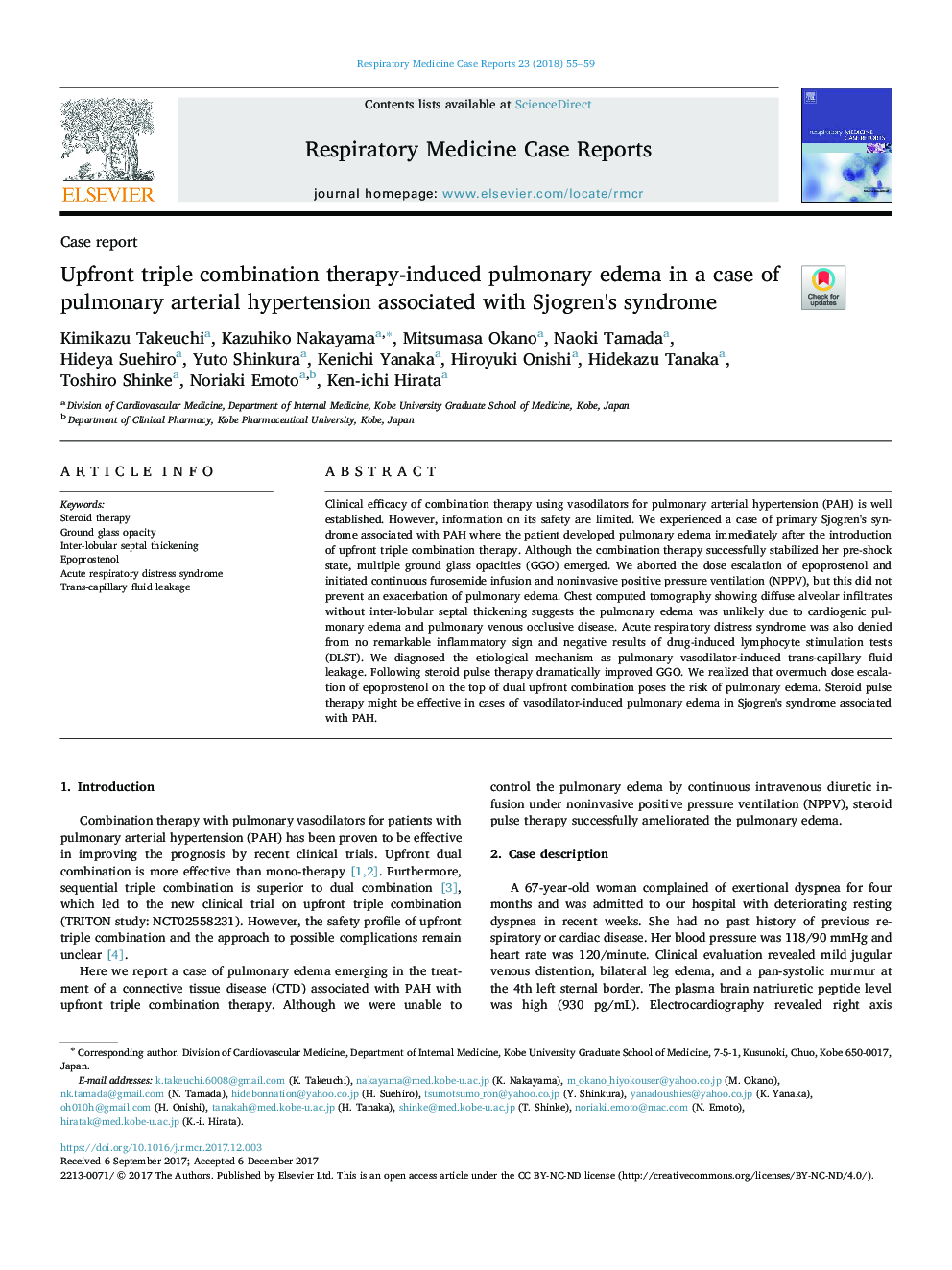| Article ID | Journal | Published Year | Pages | File Type |
|---|---|---|---|---|
| 8820286 | Respiratory Medicine Case Reports | 2018 | 5 Pages |
Abstract
Clinical efficacy of combination therapy using vasodilators for pulmonary arterial hypertension (PAH) is well established. However, information on its safety are limited. We experienced a case of primary Sjogren's syndrome associated with PAH where the patient developed pulmonary edema immediately after the introduction of upfront triple combination therapy. Although the combination therapy successfully stabilized her pre-shock state, multiple ground glass opacities (GGO) emerged. We aborted the dose escalation of epoprostenol and initiated continuous furosemide infusion and noninvasive positive pressure ventilation (NPPV), but this did not prevent an exacerbation of pulmonary edema. Chest computed tomography showing diffuse alveolar infiltrates without inter-lobular septal thickening suggests the pulmonary edema was unlikely due to cardiogenic pulmonary edema and pulmonary venous occlusive disease. Acute respiratory distress syndrome was also denied from no remarkable inflammatory sign and negative results of drug-induced lymphocyte stimulation tests (DLST). We diagnosed the etiological mechanism as pulmonary vasodilator-induced trans-capillary fluid leakage. Following steroid pulse therapy dramatically improved GGO. We realized that overmuch dose escalation of epoprostenol on the top of dual upfront combination poses the risk of pulmonary edema. Steroid pulse therapy might be effective in cases of vasodilator-induced pulmonary edema in Sjogren's syndrome associated with PAH.
Related Topics
Health Sciences
Medicine and Dentistry
Pulmonary and Respiratory Medicine
Authors
Kimikazu Takeuchi, Kazuhiko Nakayama, Mitsumasa Okano, Naoki Tamada, Hideya Suehiro, Yuto Shinkura, Kenichi Yanaka, Hiroyuki Onishi, Hidekazu Tanaka, Toshiro Shinke, Noriaki Emoto, Ken-ichi Hirata,
